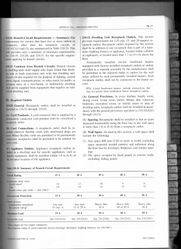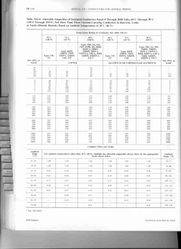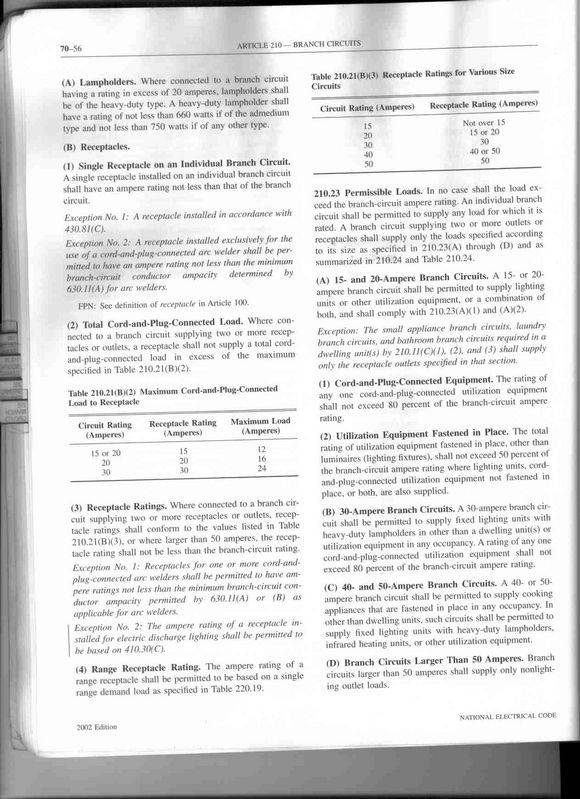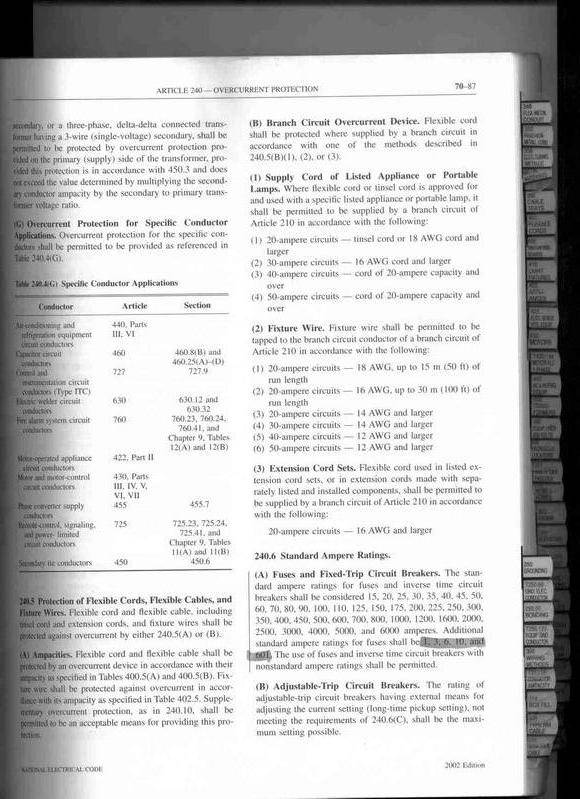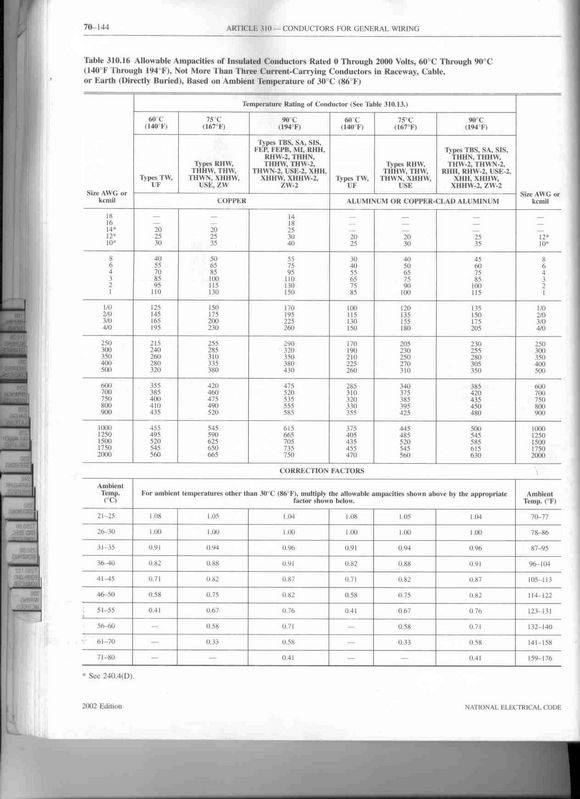G
Guest
i will be posting up links and what not to help the fellow growers here at Icmag.
i feel there is too much misinformation circulating around here and frankly, it worries me.
so, being the resident sparky around here, i feel the need to help as many people out as i can
What's wrong with using an extension cord or a power strip to run more electrical equipment?
In solving the problem of too few outlets, you may create another—an overloaded circuit. If too many pieces of equipment are plugged into the same outlet and they're all on at the same time, more current may be running through the outlet than it can handle. When that happens, the wiring or the outlet will overheat and this could potentially create an electrical fire. Overloading is even more of a problem with extension cords.
Why is an overloaded outlet a problem?
An overloaded outlet can overheat and potentially create an electrical fire.
To prevent this and other electrical hazards in your home office, review the list of potential hazards and then take steps to remedy the situation.
Potential Hazard: Overloaded circuits can cause an electrical fire.
What To Look For: Outlet or wall is warm to the touch; outlet is discolored; circuit breakers frequently trip or fuses frequently blow; a burnt smell of insulation is noticeable.
Remedy: Have an electrician run a dedicated circuit to your home office and install additional outlets in the room.
Potential Hazard: Overloaded extension cord can cause an electrical fire.
What To Look For : Extension cord is warm to the touch.
Remedy: (1) Use an extension cord with the same or larger wire size as the cord being extended. (2) Since extension cords are designed for temporary use, have an electrician install additional outlets in the room so you don't need to use extension cords at all.
Potential Hazard: Ungrounded outlets that will not protect you from an electrical shock in the event of a short circuit.
What To Look For: Equipment cord has a three-prong plug, but the nearest outlet has only two slots for the plug.
Remedy: (1) Inspect wiring at the outlet to see if there is a ground wire. If there is a ground wire, replace the existing outlet with one that accepts a three-prong plug, and connect the ground wire to the outlet. (2) In older homes, where there may not be a grounding wire, have an electrician run a new circuit with ground to your home office and install new outlets.
Potential Hazard: Improper placement of extension cords can cause a fire or cause someone to trip.
What To Look For: Extensions cords running through walls, under rugs or furniture, across doorways, or draped over heaters or equipment.
Remedy: Try rearranging office furniture; or better yet, add more outlets in the room.
Nearly one third of American households now have a home office. It may be located in a spare bedroom, a den, or part of another room. In most cases, these areas of the home were never wired for the amount of electronic equipment used in the typical home office. What's more, the same electrical circuit sending power to the outlets in your home office may also be powering outlets in other rooms. That's why it's important for you to you inspect your outlets, cords, and home wiring before adding more equipment to your home office.
What types of problems are caused by power surges?
Temporary power surges can damage equipment and cause computer programs to lock up and become corrupted. Many people assume that power surges are caused mainly by lightning strikes, but 80 percent of them are generated from within the home.
How can I protect my home office from power surges?
There are several devices that can protect your home from power surges. The first line of defense is an inexpensive power strip that incorporates surge protection. These devices cost between $20 and $80. Telecommuters can purchase power-strips with the maximum amount of surge protection, including protection for telephone and data lines.
Another option is to install surge-protected wall receptacles. "Quad receptacles" that have four outlets with built-in surge protection can replace standard electrical outlets, helping to reduce the jumble of wires that results when too many plug-in devices are used in the home office.
For more robust protection, check into two other devices: a panel-mounted surge protector installed next to the circuit breaker panel, and a meter socket surge arrestor installed at the electric meter. These devices provide whole-house surge protection and should be installed by a qualified electrician.
I have problems with brownouts. What can I do?
Blackouts and brownouts, now a more frequent occurrence in certain parts of the country, can also damage home office equipment and cause the loss of important data.
The best solution for preventing this danger is to purchase an uninterruptible power supply (UPS). Not only does a UPS device allow time for an orderly shutdown of a computer when the power goes out, it also regulates the flow of electricity, smoothing out the current before it goes to equipment. Some UPS devices also incorporate surge protection.
Will surge protectors protect me from overloaded circuits?
Surge protectors and UPS devices protect equipment, but they do not protect the telecommuter from the potential hazards of an overloaded wall receptacle. If too much equipment is plugged into the same outlet, more current may be running through the outlet than it can handle.
There are several telltale signs of overloading: an outlet that is warm to the touch; an outlet that is discolored; circuit breakers that frequently trip or fuses that frequently blow; a noticeable smell of burned insulation; an extension cord that is warm to the touch.
To prevent these electrical hazards in the home office, call an electrician to install a dedicated circuit to the home office. And while the electrician is there, consider installing additional outlets in the home office to eliminate the use of extension cords.
Prevent Electrical Problems
Studies of electrical fires in homes show that many problems are associated with improper installation of electrical devices by do-it-yourselfers. Common errors that can lead to fires include the use of improperly rated devices such as switches or receptacles and loose connections at these devices. Both can lead to overheating and arcing that can start fires. Fires are still caused by people using the wrong size fuse or even putting a penny behind a fuse when they don't have a spare. These practices are very dangerous. The fuse is a safety device designed to limit the electricity carried by the circuit to a safe level. Electricity and water are a bad combination. All electrical devices installed outdoors should be specially designed for outdoor use. Outdoor receptacles as well as those in kitchens, bathrooms, and anywhere else near water should be the ground fault circuit interrupting type (GFCI).
i feel there is too much misinformation circulating around here and frankly, it worries me.
so, being the resident sparky around here, i feel the need to help as many people out as i can
What's wrong with using an extension cord or a power strip to run more electrical equipment?
In solving the problem of too few outlets, you may create another—an overloaded circuit. If too many pieces of equipment are plugged into the same outlet and they're all on at the same time, more current may be running through the outlet than it can handle. When that happens, the wiring or the outlet will overheat and this could potentially create an electrical fire. Overloading is even more of a problem with extension cords.
Why is an overloaded outlet a problem?
An overloaded outlet can overheat and potentially create an electrical fire.
To prevent this and other electrical hazards in your home office, review the list of potential hazards and then take steps to remedy the situation.
Potential Hazard: Overloaded circuits can cause an electrical fire.
What To Look For: Outlet or wall is warm to the touch; outlet is discolored; circuit breakers frequently trip or fuses frequently blow; a burnt smell of insulation is noticeable.
Remedy: Have an electrician run a dedicated circuit to your home office and install additional outlets in the room.
Potential Hazard: Overloaded extension cord can cause an electrical fire.
What To Look For : Extension cord is warm to the touch.
Remedy: (1) Use an extension cord with the same or larger wire size as the cord being extended. (2) Since extension cords are designed for temporary use, have an electrician install additional outlets in the room so you don't need to use extension cords at all.
Potential Hazard: Ungrounded outlets that will not protect you from an electrical shock in the event of a short circuit.
What To Look For: Equipment cord has a three-prong plug, but the nearest outlet has only two slots for the plug.
Remedy: (1) Inspect wiring at the outlet to see if there is a ground wire. If there is a ground wire, replace the existing outlet with one that accepts a three-prong plug, and connect the ground wire to the outlet. (2) In older homes, where there may not be a grounding wire, have an electrician run a new circuit with ground to your home office and install new outlets.
Potential Hazard: Improper placement of extension cords can cause a fire or cause someone to trip.
What To Look For: Extensions cords running through walls, under rugs or furniture, across doorways, or draped over heaters or equipment.
Remedy: Try rearranging office furniture; or better yet, add more outlets in the room.
Nearly one third of American households now have a home office. It may be located in a spare bedroom, a den, or part of another room. In most cases, these areas of the home were never wired for the amount of electronic equipment used in the typical home office. What's more, the same electrical circuit sending power to the outlets in your home office may also be powering outlets in other rooms. That's why it's important for you to you inspect your outlets, cords, and home wiring before adding more equipment to your home office.
What types of problems are caused by power surges?
Temporary power surges can damage equipment and cause computer programs to lock up and become corrupted. Many people assume that power surges are caused mainly by lightning strikes, but 80 percent of them are generated from within the home.
How can I protect my home office from power surges?
There are several devices that can protect your home from power surges. The first line of defense is an inexpensive power strip that incorporates surge protection. These devices cost between $20 and $80. Telecommuters can purchase power-strips with the maximum amount of surge protection, including protection for telephone and data lines.
Another option is to install surge-protected wall receptacles. "Quad receptacles" that have four outlets with built-in surge protection can replace standard electrical outlets, helping to reduce the jumble of wires that results when too many plug-in devices are used in the home office.
For more robust protection, check into two other devices: a panel-mounted surge protector installed next to the circuit breaker panel, and a meter socket surge arrestor installed at the electric meter. These devices provide whole-house surge protection and should be installed by a qualified electrician.
I have problems with brownouts. What can I do?
Blackouts and brownouts, now a more frequent occurrence in certain parts of the country, can also damage home office equipment and cause the loss of important data.
The best solution for preventing this danger is to purchase an uninterruptible power supply (UPS). Not only does a UPS device allow time for an orderly shutdown of a computer when the power goes out, it also regulates the flow of electricity, smoothing out the current before it goes to equipment. Some UPS devices also incorporate surge protection.
Will surge protectors protect me from overloaded circuits?
Surge protectors and UPS devices protect equipment, but they do not protect the telecommuter from the potential hazards of an overloaded wall receptacle. If too much equipment is plugged into the same outlet, more current may be running through the outlet than it can handle.
There are several telltale signs of overloading: an outlet that is warm to the touch; an outlet that is discolored; circuit breakers that frequently trip or fuses that frequently blow; a noticeable smell of burned insulation; an extension cord that is warm to the touch.
To prevent these electrical hazards in the home office, call an electrician to install a dedicated circuit to the home office. And while the electrician is there, consider installing additional outlets in the home office to eliminate the use of extension cords.
Prevent Electrical Problems
Studies of electrical fires in homes show that many problems are associated with improper installation of electrical devices by do-it-yourselfers. Common errors that can lead to fires include the use of improperly rated devices such as switches or receptacles and loose connections at these devices. Both can lead to overheating and arcing that can start fires. Fires are still caused by people using the wrong size fuse or even putting a penny behind a fuse when they don't have a spare. These practices are very dangerous. The fuse is a safety device designed to limit the electricity carried by the circuit to a safe level. Electricity and water are a bad combination. All electrical devices installed outdoors should be specially designed for outdoor use. Outdoor receptacles as well as those in kitchens, bathrooms, and anywhere else near water should be the ground fault circuit interrupting type (GFCI).

